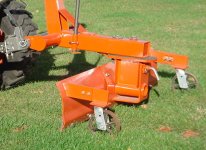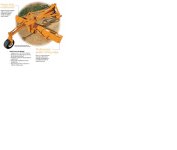Eric_Phillips
Platinum Member
I have read several posts about building some guage wheels and have one question. Some people have used essentially heavy duty casters from Harbor Freight or TSC for the wheels. My question is how have these held up? With the wheels getting so much dust do the swivel mechanisms hold up? Even the ones that you can grease I would think would just get gunked up with dirt. I would think something like what is on my mower would work beter but I am not sure how easy it would be to find the correct parts. On my mower they basically have a plate mounted off center of the wheel with a rod sticking up that goes into a piece of pipe. There are washers on either end and a cotter key at the top to hold it together. There is a grease nipple so you can fill the whole thing with grease. This seems like a better setup since it has no ball bearings and would stay relatively clean. Would you be able to find a rod and pipe that would work well enough do make your own?

